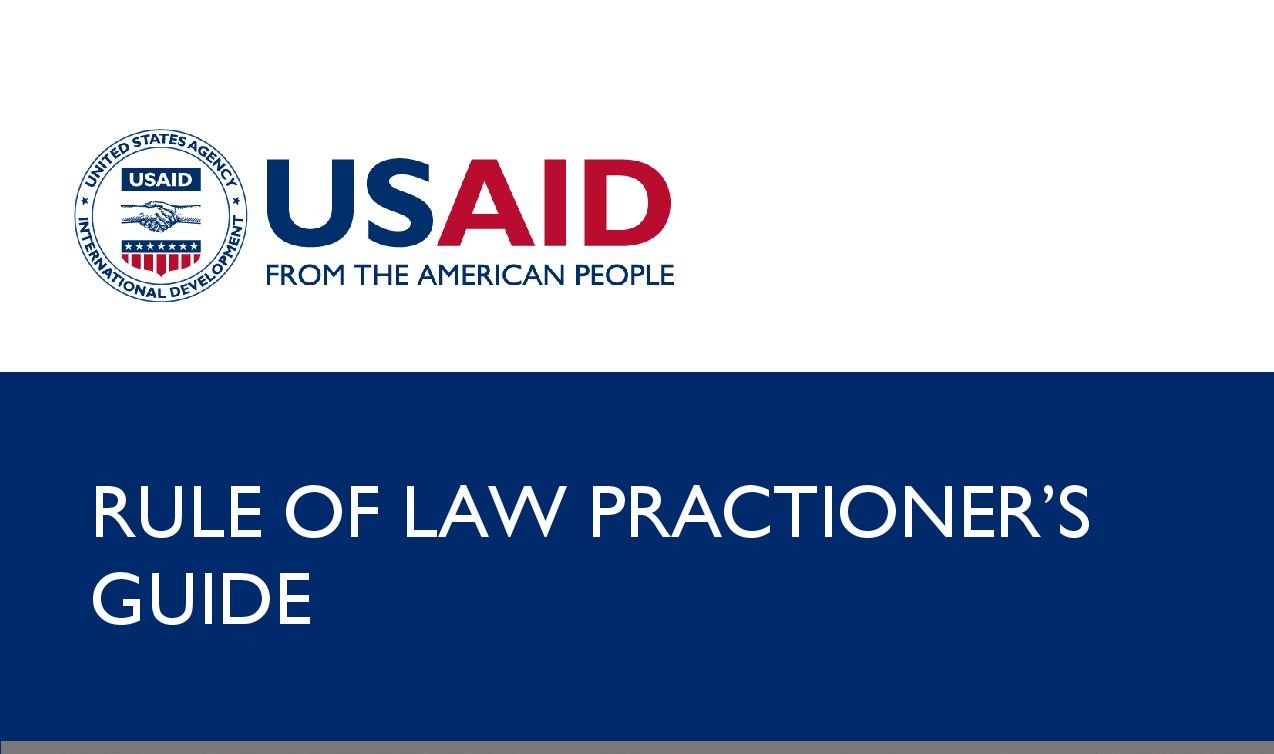USAID’s “Rule of Law Practitioner’s Guide” (the Guide) summarizes lessons learned and tools developed by USAID to improve rule of law program design and implementation. The Guide works in conjunction with USAID’s 2010 “Rule of Law Strategic Framework.” The goal of these two publications—as well as a growing ecosystem of other rule of law-related guidance—is to enable practitioners to identify root causes of rule of law problems and find sustainable “best fit” solutions within the local context. The Guide takes a practice-oriented approach to understanding why a particular reform is necessary, what forms of assistance can help address the challenges revealed, and how that assistance should be structured and delivered. The Guide also provides tools for practitioners to iterate programming, adapting to deal with obstacles, unanticipated events or problems, and other impediments to reform objectives.
The Guide focuses on several key concepts and lessons that USAID has integrated into its learning about rule of law reform, each of which is explained below.
Co-Creation: A rule of law program’s capacity to create and sustain change depends on the extent to which local efforts, agendas, and funding are involved, as opposed to relying exclusively on donor funding. Co-creation fosters a process of working together, sharing ownership, and making decisions that will tailor a program to a local context, addressing its unique challenges. Co-creation enables diverse and conflicting interests to come together to address issues in the local justice system and develop a sustainable plan of action. The variety of political and economic actors will result in a community that is further engaged with and benefits from the structural change.
Thinking and Working Politically (TWP): The TWP approach has three core principles:
- Strong political analysis, insight, and understanding;
- Detailed appreciation of and response to the local context; and
- Flexibility and adaptability in program design and implementation.
TWP aids staff in developing an informed framework for strong solutions given the political limitations of a particular context, a significant step towards achieving more sustainable results in program planning.
Political Economy Analysis (PEA): The PEA framework is an analytical tool used to understand how systems function and to identify the incentives and constraints that affect them. PEA considers local concerns rather than trying to sell a point or program. USAID then uses the “Local Systems Framework” to support field teams in identifying strengths and weaknesses in local systems and identifying where to focus program resources.
Collaborating, Learning and Adapting (CLA): USAID regularly faces rapidly changing environments and unforeseen challenges. These hurdles are addressed through flexible program models in the CLA framework. The flexibility is intended to provide room for adjustments and help the program develop a way forward when smaller points of action do not go as originally planned. CLA involves:
- Collaborating with the right partners to properly develop a synergistic effort;
- Learning from asking important questions that are relevant to decision-making; and
- Adapting the information gathered through collaboration and learning to make better decisions and adjustments.
Using CLA creates a program that values continuous learning and relationship building with partners to promote a continuing loop of collaboration and adaptive management.
Continual Monitoring: The Guide also recognizes the need for training program participants to apply training content in the workplace after training has concluded, and the process has resulted in significant performance improvement. USAID has developed the Human and Institutional Capacity Development (HICD) model to change organizational behavior to ensure long-lasting results. The Guide also states that rule of law programs must have dedicated efforts to develop outcome markers that differ from measuring concepts that do not necessarily signal success. USAID’s Learning Lab helps on this front with its guidance on complexity-awareness monitoring methods that help identify the outcomes and impacts of programs. Effective measurement of a program’s performance is critical to determining its success and to designing future programs.
NOTE: This summary is produced by the Rule of Law Collaborative, not by the original author(s).

